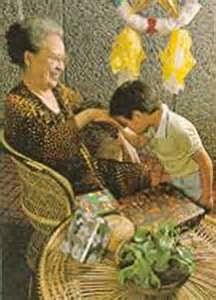The Spending Based Economy
The Philippines
is a consumer and service based economy. Meaning the economy is driven by
consumer spending, while consumer’s purchasing power emanates from domestic and
foreign services. The latter constitutes the bulk of the country’s economic
stimulus substantially sustained by the middle sector acting as the significant consumer
base.
Think
of a pyramid where there is an apex represented by the oligarch constituting
the minute portion of the population that owns and controls the big industry. Next
is the upper middle section of the pyramid that has the capacity to generate
income to sustain consumption of needs as well as wants. Owners of medium and
small scale enterprises, professionals, overseas contract workers, technology
experts, corporate employees in the pay of large companies and intrapreneur, belongs to this group. At the lower middle section are the contractual
laborers, other corporate employees, transport drivers, market vendors,
tailors, barbers and the like. They generate income just enough to sustain
family needs. The last section of the pyramid are mostly consisted by the unemployed and the occasionally employed which is the widest base in our imaginary pyramid. They represent the majority
of the population and have neither the capacity nor the regular means to cater
for their daily needs. They earn their living in uncertainty day by day. These are the marginal farmers, fisherman, weavers, jeepney barkers,
peddlers and the jobless.
Analyzing the sections in the imaginary pyramid one may note that economic interaction can only be possible from the apex, down to the lower middle section. The lowest
section that represents the largest and supposedly the base of the imaginary economic
pyramid has very little economic activity and has been gasping for relief in a long time. Economic
benefit from the apex of the imaginary pyramid only trickles down to those who has the
capacity to spend and who has the skill to meet the demand for services. Ergo,
the lowest in the base is effectively dislodged from the economic
pyramid not having the strength to support a consumer based economy, while the apex seems to have remained unshaken by the shift. A new
economic base is created in the lower and upper middle section.These are the
sectors that supports the Philippine economy.
What
happens now with the lowest sector that was displaced from the economic circle by
the dictates of the free market economy and consumerism? Well, they are now
relegated under the title of economic burden, the unproductive social component
and the beneficiary of government social welfare expenditures. They are the have nots.Is
there a way to revive this displaced sector into a healthy component of the
economic pyramid?
Production is the missing component in the Philippine economic equation. A combination of service based, consumer based and production based economy, in free interplay, will strengthen the excluded economic base, the unskilled and the jobless.
Production is the missing component in the Philippine economic equation. A combination of service based, consumer based and production based economy, in free interplay, will strengthen the excluded economic base, the unskilled and the jobless.
Production will add density to the apex portion of the pyramid that is traditionally dominated by the elite, which essentially will require a broader labor base. Production of labor intensive products, that can compete in the world market because of quality, requiring miniscule training, that can accommodate the less skilled maybe introduced on a large scale. Domestic capital must be developed along with foreign investments which may be lured by irresistible incentives in exchange for hiring locals and training them. Production facilities should be evenly distributed to the provinces to decongest and encourage emigration. Local government of selected facility sites should be able to extend further incentives. Shipbuilding and aircraft manufacturing are potentially rich as source of labor demand. Defense equipment manufacturing in partnership with European counterpart may enhance labor demand. Large scale corporate farming demands lesser skills. Industrial component manufacturing from pins, bolt and nuts to engine support and so much more.
The
point in fact is the Philippines
should be producing much as it spends. It should sign-off from General
Agreement on Tariffs and Trade (GATT) and the likes of it for the simple reason that the
Philippines has only bananas to trade with and nothing else on a scale that would be commensurate with that of other countries. Otherwise, the Philippines will continue to be flooded with low tariff goods killing and discouraging struggling and gestating local
counterpart, respectively. The Philippines
should not be importing needles and threads anymore. Rather, it should be exporting engines,
aircraft components, military boots, magazines, machine-gun link belts, helmets, gun
barrels, missile and radar components, pans and rice cookers, spoon, brake
pads, fan belts, sandals, slippers and so on…….
There are more obstacles than mere glitches; for example direct and indirect political and economic pressure from developed and industrialized countries for so long had prevented developing countries like
the Philippines
to industrialize. They wanted a ready market not a
competitor. But can the Philippines still afford to subscribe to such demeanor? If the Philippines is truly bent on eradicating poverty and true to the intention of restoring dignity to its people, it must break away from the whims of the manipulators in the world economy. Away from the lures and impositions of the World Trade Organization and its transnational cohorts. It has to produce what the world needed and wanted. It has the momentum and leadership to do it; it has to start now.

Comments
Post a Comment